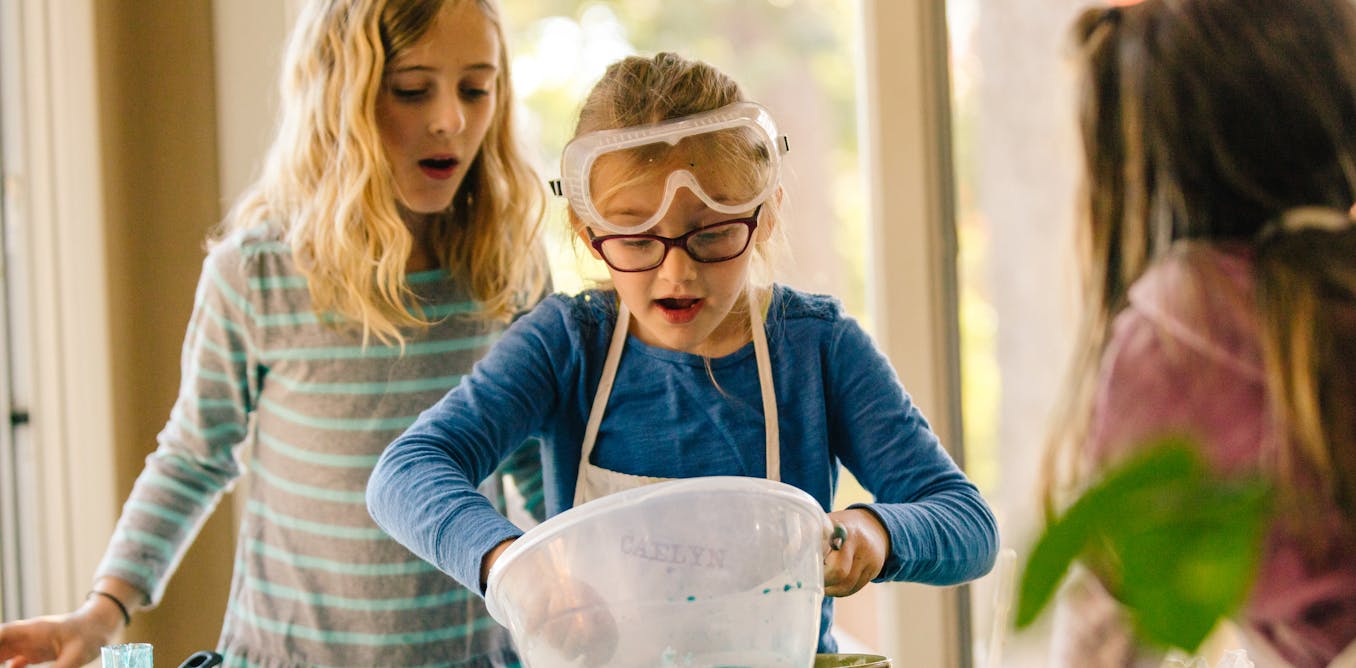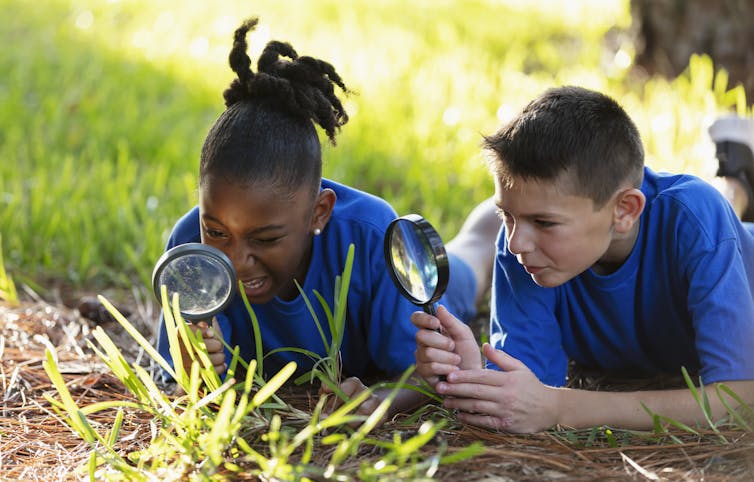 Families and caregivers can boost children’s confidence and interest in science, technology, engineering and mathematics while school is out for Summer. heshphoto/Getty Images –
Families and caregivers can boost children’s confidence and interest in science, technology, engineering and mathematics while school is out for Summer. heshphoto/Getty Images –
Published: 2025 Jun 06
–
The Trump administration is reshaping the pursuit of science through federal cuts to research grants and the Department of Education. This will have real consequences for students interested in science, technology, engineering and mathematics, or STEM learning.
One of those consequences is the elimination of learning opportunities such as robotics camps and access to advanced math courses for K-12 students.
As a result, families and caregivers are more essential than ever in supporting children’s learning.
Based on my research, I offer four ways to support children’s Summer learning in ways that feel playful and engaging but still foster their interest, confidence and skills in STEM.
1. Find a problem

–
Look for “problems” in or around your home to engineer a solution for. Engineering a solution could include brainstorming ideas, drawing a sketch, creating a prototype or a first draft, testing and improving the prototype and communicating about the invention.
For example, one family in our research created an upside-down soap dispenser for the following problem: “the way it’s designed” − specifically, the straw − “it doesn’t even reach the bottom of the container. So there’s a lot of soap sitting at the bottom.”
To identify a problem and engage in the engineering design process, families are encouraged to use common materials. The materials may include cardboard boxes, cotton balls, construction paper, pine cones and rocks.
Our research found that when children engage in engineering in the home environment with caregivers, parents and siblings, they communicate about and apply science and math concepts that are often “hidden” in their actions.
For instance, when building a paper roller coaster for a marble, children think about how the height will affect the speed of the marble. In math, this relates to the relationship between two variables, or the idea that one thing, such as height, impacts another, the speed. In science, they are applying concepts of kinetic energy and potential energy. The higher the starting point, the more potential energy is converted into kinetic energy, which makes the marble move faster.
In addition, children are learning what it means to be an engineer through their actions and experience. Families and caregivers play a role in supporting their creative thinking and willingness to work through challenging problems.
2. Spark curiosity

–
Open up a space for exploration around STEM concepts driven by their interests.
Currently, my research with STEM professionals who were homeschooled talk about the power of learning sparked by curiosity.
One participant stated, “At one time, I got really into ladybugs, well Asian Beatles I guess. It was when we had like hundreds in our house. I was like, what is happening? So, I wanted to figure out like why they were there, and then the difference between ladybugs and Asian beetles because people kept saying, these aren’t actually ladybugs.”
Researchers label this serendipitous science engagement, or even spontaneous math moments. The moments lead to deep engagement and learning of STEM concepts. This may also be a chance to learn things with your child.
3. Facilitate thinking
In my research, being uncertain about STEM concepts may lead to children exploring and considering different ideas. One concept in particular − playful uncertainties − is when parents and caregivers know the answer to a child’s uncertainties but act as if they do not know.
For example, suppose your child asks, “How can we measure the distance between St. Louis, Missouri, and Nashville, Tennessee, on this map?” You might respond, “I don’t know. What do you think?” This gives children the chance to share their ideas before a parent or caregiver guides them toward a response.
4. Bring STEM to life

–
Turn ordinary moments into curious conversations.
“This recipe is for four people, but we have 11 people coming to dinner. What should we do?”
In a recent interview, one participant described how much they learned from listening in on financial conversations, seeing how decisions got made about money, and watching how bills were handled. They were developing financial literacy and math skills.
As they noted, “By the time I got to high school, I had a very good basis on what I’m doing and how to do it and function as a person in society.”
Globally, individuals lack financial literacy, which can lead to negative outcomes in the future when it comes to topics such as retirement planning and debt.
Why is this important?
Research shows that talking with friends and family about STEM concepts supports how children see themselves as learners and their later success in STEM fields, even if they do not pursue a career in STEM.
My research also shows how family STEM participation gives children opportunities to explore STEM ideas in ways that go beyond what they typically experience in school.
In my view, these kinds of STEM experiences don’t compete with what children learn in school − they strengthen and support it.
–
- Mathematics
- Parenting
- Engineering
- STEM
- Summer learning
- Financial literacy
- Math education
- family fun
- Science experiments
–
Partners
Binghamton University, State University of New York provides funding as a founding partner of The Conversation US.
Republish our articles for free, online or in print, under a Creative Commons license.
–
Helping you understand the news
When complicated stories are in the news, The Conversation is especially relevant. Our editors specialize in finding experts and helping them write articles explaining the key concepts clearly, but always accurately, based on years or decades of study.
The future of AI is a perfect example of this. There’s been a lot of facile analysis in the media from pundits who either position it as the greatest advancement of all time or posit horror stories about it running amok. But readers of The Conversation have benefitted from thoughtful analysis and research from dozens of experts, from disciplines ranging from information retrieval to ethics, law, education to art.
If you give today, we’ll send you two e-books. The first compiles seven of our most insightful articles on the future of work, ranging across topics from the impact of generative AI to how workers are taking more control over their work lives. The second brings together articles on the wisdom of ancient texts.
It’s our way of thanking the readers who make what we do possible, and it will enable us to continue toprovide this trustworthy journalism for free to readers around the world.
Thank you.
–
Want to write?
Write an article and join a growing community of more than 205,100 academics and researchers from 5,222 institutions.













Andrew Taylor
STEM is so old-hat. There’s a new acrostic in town, created by the latest ed-tech. It’s very hush-hush at the moment, but trust me it’ll soon be huge in ed circles:
Science.
Culture.
Habitat.
Organization.
Obligations.
Logic.
–